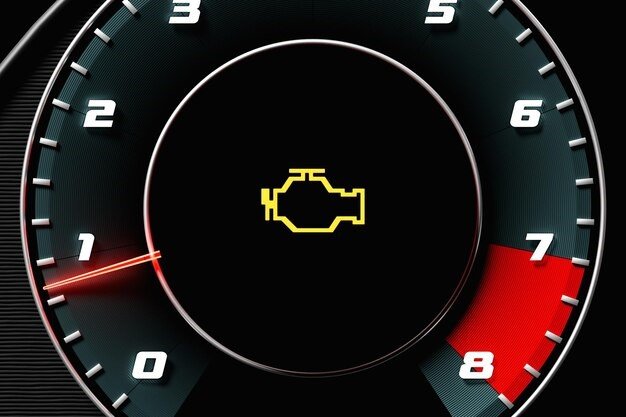For most of you, the check engine light illuminate on your dashboard can be alarming. It’s a signal from your vehicle’s computer that something requires attention, but don’t panic. In this blog, we’ll discuss various methods to reset the check engine light and why it’s essential to address the underlying issues. We’ll also touch on our fluid exchange service, an important aspect of vehicle maintenance that can help keep your car running smoothly.
Understanding the Check Engine Light
The check engine light is a warning indicator that alerts you to potential issues with your vehicle. It receives information from sensors connected to the engine control module (ECM), which monitors various functions within your car. When a problem arises—whether it's a minor issue like a loose gas cap or something more serious like engine misfires—the check engine light activates. While you can reset the light, it’s crucial to understand that doing so does not fix the underlying problem. Ignoring this warning could lead to more significant issues down the road.
Methods to Reset Your Check Engine Light
There are several ways to reset your check engine light, and we often recommend these methods based on your situation:
- Using an OBD-II Scanner: If you have access to an OBD-II scanner, this is an effective way to reset the check engine light. Simply plug in the scanner, read any stored error codes, and clear them. This method not only resets the light but also provides insight into what triggered it in the first place.
- Driving Your Vehicle: Sometimes, if the light was triggered by a minor issue that has since been resolved, simply driving your vehicle for a while can cause the light to turn off on its own. However, ensure that any necessary repairs have been made before relying on this method.
- Rebooting the Computer: Another simple technique involves turning your key to the "on" position for 1-2 seconds and then turning it off for 1-2 seconds repeatedly for about three to four cycles. This can sometimes reset minor faults in your system.
The Importance of Addressing Underlying Issues
While resetting your check engine light may seem like an easy fix, it’s essential to address any underlying problems that caused it to illuminate in the first place. Ignoring these issues can lead to more severe damage and costly repairs down the line. At SPARKS Complete Car Care, we encourage you to bring your vehicle in for a thorough diagnostic inspection if you notice persistent warning lights. Our experienced technicians will identify any problems and provide effective solutions.
Fluid Exchange Service: A Key Component of Maintenance
In addition to addressing check engine lights, regular maintenance is crucial for keeping your vehicle running smoothly. One vital service we offer at SPARKS Complete Car Care is fluid exchange service. Over time, fluids in your vehicle can become contaminated or lose their effectiveness due to heat and wear. Our fluid exchange service includes replacing old fluids with fresh ones in critical systems such as transmission, brake, coolant, and power steering.
By keeping up with these services, you can extend your vehicle's lifespan and maintain optimal performance.
Conclusion: Stay Ahead of Potential Issues
In conclusion, resetting your check engine light is a manageable task that can help alleviate immediate concerns about your vehicle’s performance. However, it’s essential to remember that this action should not replace proper diagnostics and repairs when necessary. At SPARKS Complete Car Care in Naperville, IL, we are committed to providing comprehensive automotive care that goes beyond just resetting warning lights. Whether you need help with a check engine light or require fluid exchange services, our team is here to assist you every step of the way. Contact us today at (630) 904-4115 and let us help keep you safely on the road!










